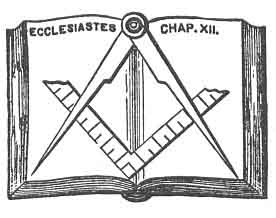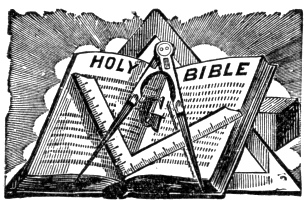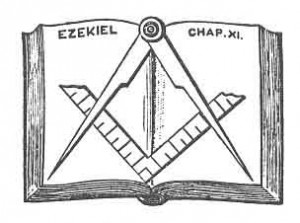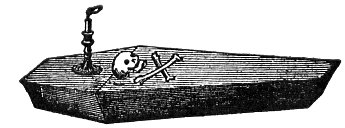The reader has observed that the number six, in the Degree under consideration, is particularly respected. In the opening scene of initiations, not noticed above, the candidate is prepared with a rope wound six times round his body, and is then conducted to the door of the Lodge, against which he gives six distinct knocks, which are answered by the same number from within; and, when admitted, he is walked six times around the Lodge, moving with the sun. On the contrary, the brethren more advanced form a procession, as above stated. and march six times around the Lodge, against the course of the sun. Masons from habit pass through these ceremonies, without stopping to examine into their meaning and original intention.
The Druids also paid great veneration to the number six. “As to what remains,” says Mayo (vol. ii. p. 239), “respecting the superstitions p. 209 of the Druids, I know not what was the foundation of the religious respect which they had for the number six: but it is certain they preferred it to all other numbers. It was the sixth day of the moon that they performed their principal ceremonies of religion, and that they began the year. They went six in number to gather the mistletoe; and in monuments now extinct we often find six of these priests together.”–Fellow’s Inquiry into the Origin, History, and Purport of Freemasonry, p. 318.
210:1 During the ceremonies two pillars are erected. each of about five feet high, and an arch placed over them, made in imitation of block-work, in the centre of which a mortise is left for the reception of a KEYSTONE; the Most Excellent Master, taking the keystone in his hand, places it. in the arch, and drives it home with six raps of his gavel.–Historical Landmarks, vol. ii. p. 128.
210:2 This pot contains gum camphor or other inflammable matter.
214:1 “Recent discoveries in Ethiopia have brought to light,” says a writer on the Egyptian antiquities in the British Museum, “arches regularly constructed with the key-stone. The same arch is also found in the vaulted roof of a small building or portico in the Egyptian style, which is attached to one of the sides of the largest pyramids at Assour. At Jebel Barkal, Mr. Waddington observed an arched roof in a portico attached to a pyramid.” These pyramids are supposed to be of higher antiquity than the building of King Solomon’s Temple.–Theo. Phil., p. 208.
Next: Royal Arch, or Seventh Degree
Index

Moe is the founder of GnosticWarrior.com. He is a father, husband, author, martial arts black belt, and an expert in Gnosticism, the occult, and esotericism.







![How the Abbot Ceolfrid sent master-builders to the King of the Picts to build a church, and with them an epistle concerning the catholic Easter and the Tonsure [710 A.D.] | Book 5 | Chapter 20 How the Abbot Ceolfrid sent master-builders to the King of the Picts to build a church, and with them an epistle concerning the catholic Easter and the Tonsure [710 A.D.] | Book 5 | Chapter 20](https://www.gnosticwarrior.com/wp-content/plugins/contextual-related-posts/default.png)
